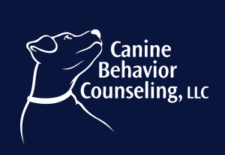Reward Based Training
Rewarding your dog for appropriate behavior is not a new concept, however many of us are “old school” and simple grew up telling our dog what to do. Using rewards or reinforcement will help your dog want to please you more often!
What is Reinforcement?
Reinforcement is something you add to your training to increase or strengthen a behavior. High pitch praise, food, laughing, clapping, freedom, walks, going out the door, bones, tug you get it! I want you to help your dog understand that when he complies life is good for him and that there are consequences for his actions which will help him make the correct decision!
Mark the Behavior
Timing is very important as this is how you communicate with your dog. Dogs do not speak our language so they can only associate a behavior with a reward or a correction, and only if the time between the two is very short. Using a marker like a “yes” or clicker will speed your dogs learning. Marking involves having effective timing so you mark the exact moment the dog does the correct behavior then follow through with reinforcement!
Rate of Reinforcement
Reward often, our dogs learn through associations, so rewards help them know when they are doing something appropriate to us. To strengthen the behavior you want you should continue to reward. How often should you reward? As often as needed! Really good trainers reward generously which keeps the dog motivated in the task at hand. If you mark a behavior with a click or “yes”, then always follow through with a reward.
Put it all together
The dog that pulls on the leash is very frustrating to walk. Try using a marker to help the dog understand what it is you want. When the dog pulls, stop walking, using a clicker, click and reward when your dog looks at you, be patient! Repeat until your dog begins to look at you while you are moving forward together. Take two steps, if your dog looks at you REWARD! then three, then five, then several, then for longer and longer distances. The dog is being paid to focus on you; it cannot do that and pull at the same time. If your dog pulls, stop again and wait until he looks at you, then reward. Eventually just putting on the leash can become a cue for “walking together.” Paying your dog for heeling nicely is much more effective than punishing the pull. It’s also more effective than the physical intervention of hauling the dog’s head and neck around repeatedly by the leash, which will give you a sore arm before too long! Have fun and watch your dog learn quickly through marking and rewarding!
Rewarding your dog for appropriate behavior is not a new concept, however many of us are “old school” and simple grew up telling our dog what to do. Using rewards or reinforcement will help your dog want to please you more often!
What is Reinforcement?
Reinforcement is something you add to your training to increase or strengthen a behavior. High pitch praise, food, laughing, clapping, freedom, walks, going out the door, bones, tug you get it! I want you to help your dog understand that when he complies life is good for him and that there are consequences for his actions which will help him make the correct decision!
Mark the Behavior
Timing is very important as this is how you communicate with your dog. Dogs do not speak our language so they can only associate a behavior with a reward or a correction, and only if the time between the two is very short. Using a marker like a “yes” or clicker will speed your dogs learning. Marking involves having effective timing so you mark the exact moment the dog does the correct behavior then follow through with reinforcement!
Rate of Reinforcement
Reward often, our dogs learn through associations, so rewards help them know when they are doing something appropriate to us. To strengthen the behavior you want you should continue to reward. How often should you reward? As often as needed! Really good trainers reward generously which keeps the dog motivated in the task at hand. If you mark a behavior with a click or “yes”, then always follow through with a reward.
Put it all together
The dog that pulls on the leash is very frustrating to walk. Try using a marker to help the dog understand what it is you want. When the dog pulls, stop walking, using a clicker, click and reward when your dog looks at you, be patient! Repeat until your dog begins to look at you while you are moving forward together. Take two steps, if your dog looks at you REWARD! then three, then five, then several, then for longer and longer distances. The dog is being paid to focus on you; it cannot do that and pull at the same time. If your dog pulls, stop again and wait until he looks at you, then reward. Eventually just putting on the leash can become a cue for “walking together.” Paying your dog for heeling nicely is much more effective than punishing the pull. It’s also more effective than the physical intervention of hauling the dog’s head and neck around repeatedly by the leash, which will give you a sore arm before too long! Have fun and watch your dog learn quickly through marking and rewarding!


